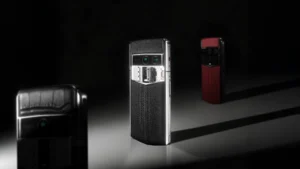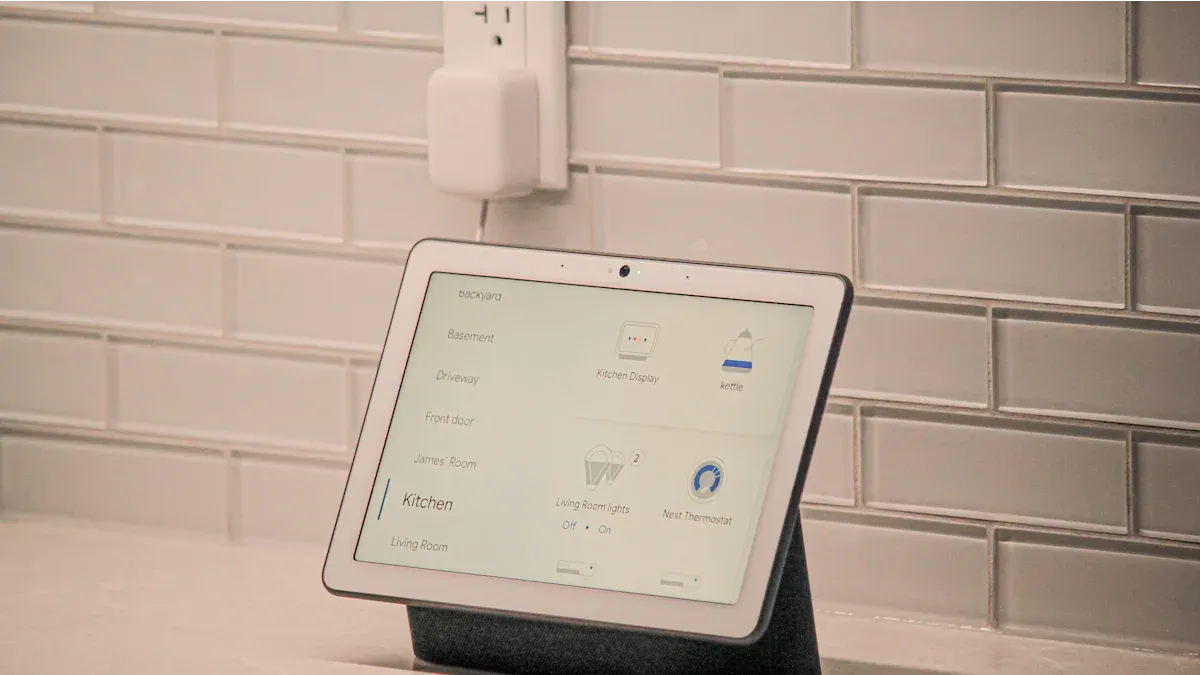
If you want to make your home better in 2025, start with top smart home devices. Try the Amazon Echo Show 10, Philips Hue lights, and a smart thermostat. These gadgets help make your daily life easier and safer. See how smart home devices help homes today:
|
Aspect |
Statistic / Data Point |
Benefit |
|---|---|---|
|
Smart lighting |
Convenience |
|
|
Security cameras |
23% market share |
Security |
|
Smart speakers |
19% market share |
Comfort |
|
Smart TVs |
14% market share |
Entertainment |
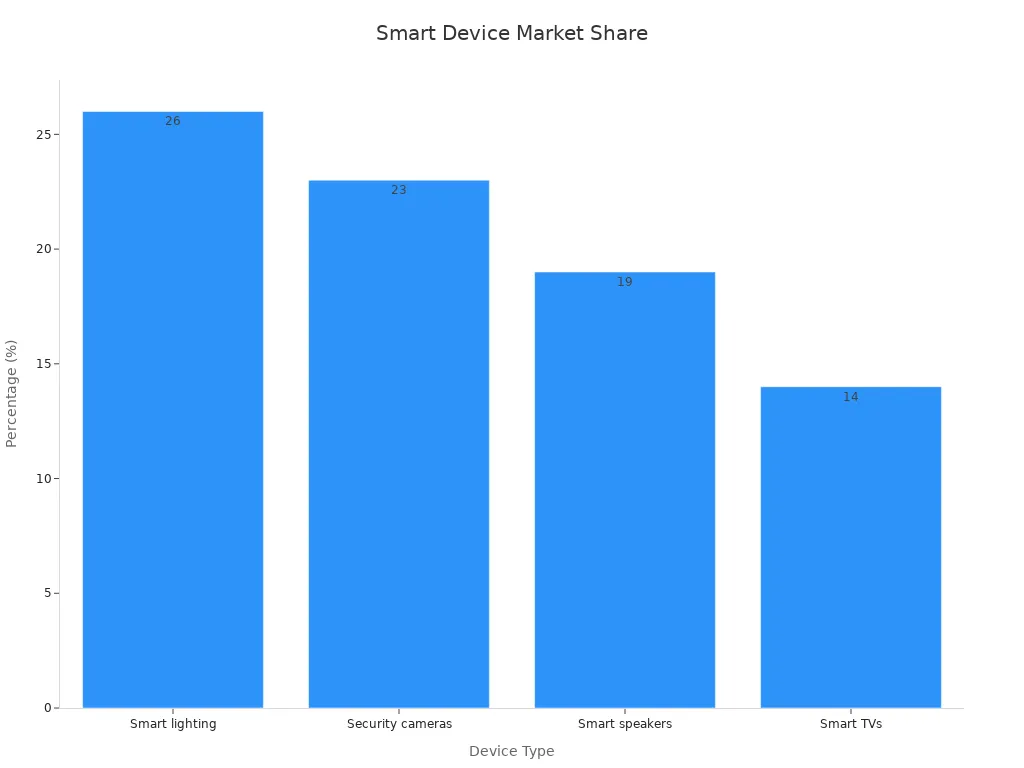
You can find Electronics for home that match your style and needs.
Key Takeaways
-
Begin your smart home upgrade with smart speakers, smart plugs, and smart lighting. These devices make life easier, more comfortable, and help save energy.
-
Use smart security devices like smart locks, video doorbells, and cameras. They help keep your home safe and send you alerts right away, no matter where you are.
-
Pick smart home products that work well together. Check if they are compatible with your voice assistant and other devices before you buy them.
-
Keep your smart home safe by using strong passwords. Turn on two-factor authentication and update your devices often to protect your information.
-
Add smart devices slowly. Focus on easy-to-use features that match your lifestyle. This will help you build a smarter, safer, and more comfortable home.
Best Smart Home Devices 2025
Choosing the best smart home devices for 2025 can feel overwhelming, but you can start with a few essentials. These devices work together to make your home smarter, safer, and more comfortable. Let’s break down the top picks for each category so you can build a connected home that fits your needs.
Smart Speakers
Smart speakers have become the heart of many smart homes. You can use a smart speaker to play music, set reminders, control other devices, or even ask questions. The best smart speakers for 2025 include the Amazon Echo Show 10, Apple HomePod mini, and Google Nest Audio. These models offer clear sound, voice assistant support, and easy setup.
-
Amazon Echo Show 10 stands out because it combines a smart speaker with a rotating display. You can video call family or watch recipes while cooking.
-
Apple HomePod mini gives you great sound in a small package. It works best if you use Apple devices.
-
Google Nest Audio fits well with Google services and offers strong voice recognition.
Tip: Place your smart speaker in a central spot, like the kitchen or living room, so you can control your home from anywhere.
Smart speakers connect with most smart home devices, making them a must-have for any setup.
Smart Displays
A smart display takes everything you love about a smart speaker and adds a screen. You can see weather updates, watch videos, or control your devices with a tap. The best smart displays for 2025 are the Google Nest Hub Max and Amazon Echo Show 10.
-
Google Nest Hub Max lets you make video calls, watch YouTube, and control your smart home devices with a glance.
-
Amazon Echo Show 10 follows you as you move, so you never miss a thing during a call or while following a recipe.
The best smart displays help you manage your day and keep your home running smoothly. You can even use them as digital photo frames when you’re not using them.
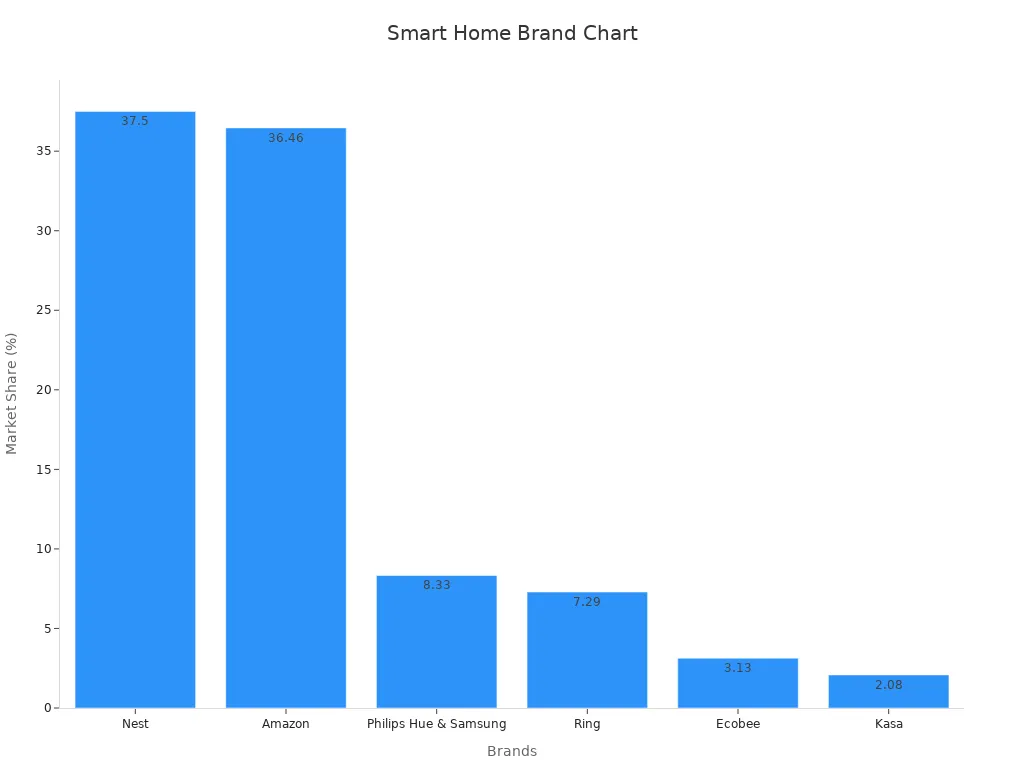
Smart Plugs
Smart plugs are one of the easiest ways to upgrade your home. You just plug them into an outlet and connect your lamp, fan, or coffee maker. The best smart plugs for 2025 include the Amazon Smart Plug, Kasa Smart Plug, and TP-Link Tapo.
-
Amazon Smart Plug works perfectly with Alexa. You can turn devices on or off with your voice or set schedules.
-
Kasa Smart Plug offers energy monitoring, so you can see how much power your devices use.
-
TP-Link Tapo gives you remote control from your phone, even when you’re not home.
The best smart plugs help you save energy and add convenience to your daily routine. You can set your lights to turn on before you get home or make sure you never leave the iron on by accident.
Smart Bulbs
Smart bulbs let you change the mood of any room with just your voice or a tap on your phone. Philips Hue leads the way in 2025, offering bright colors, easy setup, and wide compatibility. You can choose from millions of colors or set schedules to match your routine.
-
Philips Hue bulbs work with Alexa, Google Assistant, and Apple HomeKit.
-
You can group bulbs together and control them all at once.
-
Set your lights to wake you up gently in the morning or dim for movie night.
Smart bulbs are a simple way to make your home feel modern and fun. They also help you save energy by letting you turn off lights from anywhere.
Smart Hubs
A smart hub brings all your smart home devices together. With a hub, you can control everything from one app or with your voice. The best smart home hubs for 2025 include Samsung SmartThings, Apple HomePod mini, and the Amazon Echo Show 10 (which doubles as a hub).
-
Samsung SmartThings supports a wide range of devices, including Z-Wave and Zigbee products.
-
Apple HomePod mini acts as a hub for Apple HomeKit devices.
-
Amazon Echo Show 10 can control many devices and works well with Alexa.
Here’s a quick look at how top smart home systems compare:
|
System |
Ranking |
Ratings |
Voice Assistants Compatible |
Third-party IoT Compatibility |
Installation Type |
Starting Equipment Price |
Monthly Monitoring Price |
|---|---|---|---|---|---|---|---|
|
ADT |
1st |
9.8/10 |
Alexa, Google Home |
Kwikset, LiftMaster, Google Nest, Z-wave |
Professional or DIY |
$269 |
$24.99-$39.99 |
|
Vivint |
2nd |
9.4/10 |
Alexa, Google Home |
Philips Hue, Nest thermostats |
Professional |
$600 |
$45 |
|
SimpliSafe |
3rd |
9.9/10 |
Alexa, Google Home |
August Smart Locks |
DIY or professional ($125) |
$250 |
$0-$79 |
|
abode |
4th |
8.0/10 |
Alexa, Google Home, Apple HomeKit |
Google Nest, Philips Hue, ecobee, LIFX, Yale, Kwikset, First Alert, IFTTT, Z-wave |
DIY or professional ($79) |
$100.99 |
$0-$25.99 |
|
Ring Alarm |
5th |
7.7/10 |
Alexa, Google Home |
Dome, Ecolink, First Alert, GE, Leviton |
DIY or professional ($99) |
$279 |
$0-$30 |
|
Cove |
6th |
8.7/10 |
Alexa, Google Home |
Nest thermostats, August smart locks |
DIY |
$81 |
$20-$30 |
Note: Smart hubs make it easy to add new devices as your needs grow. You can start small and expand your system over time.
Industry forecasts show that smart home devices are becoming more popular every year. More people want convenience, security, and energy savings. In the US, smart home sales are expected to reach $47 billion by 2025. Smart speakers, smart displays, and smart plugs form the foundation of the best smart home devices, and they work with all major platforms like Alexa, Google Assistant, and Apple HomeKit.
Smart Home Devices for Living Room
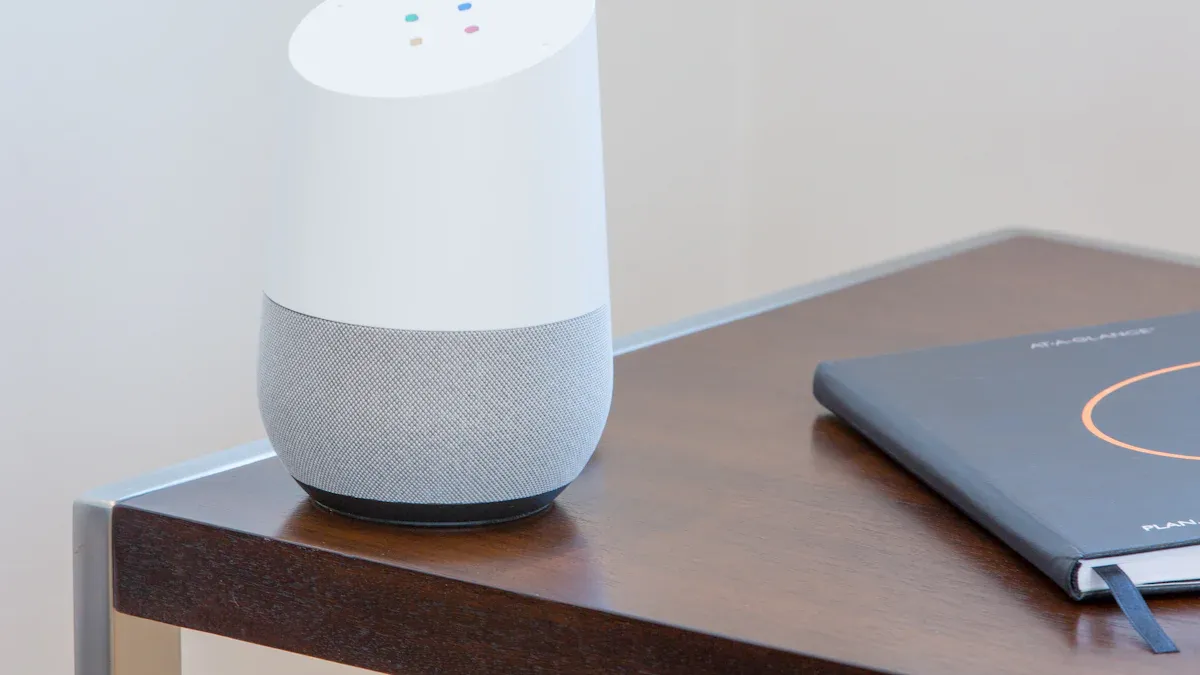
Your living room is the heart of your home. It’s where you relax, watch TV, and spend time with family. Upgrading this space with smart home devices can make your daily routine easier and more fun.
Voice Assistants
A smart speaker with a voice assistant can change how you use your living room. You can play music, check the weather, or control your lights just by asking. Many people love these devices. In fact, about 35.6% of Americans own at least one smart speaker, making it the most popular smart home device for the living room. You might like the Amazon Echo Show 10 or Google Nest Hub Max. These models let you control other devices, set reminders, and even make video calls. Convenience is a big reason why 46% of people choose smart home devices.
Tip: Place your smart speaker in a central spot so everyone can use it.
Streaming Devices
Streaming devices turn your regular TV into a smart entertainment hub. You can watch your favorite shows, movies, or YouTube videos with just a few clicks or voice commands. Smart TVs and streaming sticks are very popular. Many people say that video entertainment devices are their top choice for the living room. You can connect these devices with your smart lighting, so your lights dim automatically when you start a movie. This makes your movie nights feel special.
-
Popular streaming devices include Roku, Amazon Fire TV Stick, and Apple TV.
-
Many smart TVs now come with built-in voice assistants.
Robot Vacuums
Keeping your living room clean is easy with robot vacuum-mop combos. These smart gadgets move around your floor, picking up dust and even mopping up spills. You don’t have to lift a finger. Many homeowners want smart home devices that save time and effort. Robot vacuum-mop combos fit right in. You can schedule them to clean while you’re out or relaxing on the couch. Some models even work with your voice assistant, so you can start cleaning with a simple command.
Note: Robot vacuum-mop combos help keep your living room tidy without any extra work from you.
Smart home devices in the living room can connect with your entertainment and lighting systems. This makes your space more comfortable and enjoyable every day.
Electronics for Home Security
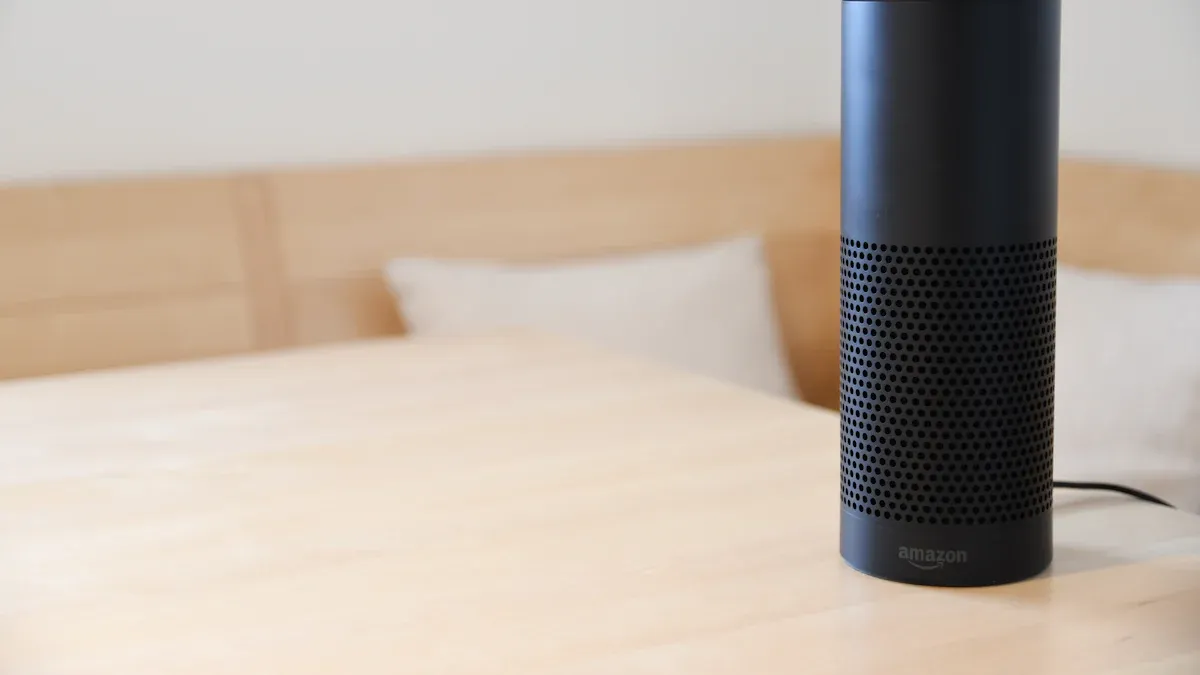
You want your home to be safe. The right electronics for home help you feel calm. They work whether you are at work or on vacation. Let’s see which smart security devices help most in 2025.
Smart Locks
A smart lock lets you use your phone or voice to open doors. You do not need to worry about losing your keys. Many people like smart locks because they are easy and strong. About 14% of people with security systems use a smart lock. Another 25% want to get one soon. August and Schlage are top brands. They have auto-lock and guest access features. With a smart lock, you can let friends or family in even if you are not home.
Video Doorbells
A video doorbell lets you see who is at your door. You can check even when you are not home. The best video doorbells, like Ring and Google Nest, send live video to your phone. One in three people with smart security use a video doorbell. Also, 37% of others want to buy one soon. Brands like Arlo, August, and Ring use two-factor authentication. This keeps your videos safe. The best video doorbells give you clear video and smart alerts. You always know what is happening outside.
Security Cameras
Security cameras let you check your home anytime. Many electronics for home now have cameras with clear video and smart features. You can see people, cars, or pets. Blink, Wyze Cam, and Vivint make good cameras for smart homes. Experts say to pick cameras with local storage or Power over Ethernet. These give you more privacy and work better. Ring is the top brand, but Google Nest and ADT are also popular.
|
Security Device Type |
Usage or Popularity Insight |
|---|---|
|
Smart Locks |
Used by 14% of security system owners; 25% plan to upgrade or purchase soon. |
|
Video Doorbells |
One in three users rely on Ring; 37% of non-users plan to buy one. |
|
Security Cameras |
Internal cameras used by 24% of users; 17% plan to upgrade. |
Contact Sensors
Contact sensors tell you if a door or window opens. These small electronics for home are simple to set up. They work with most smart security devices. You can get a message if someone tries to come in. Many people add contact sensors for extra safety.
Tip: Always check if your electronics for home use two-factor authentication. This helps keep your data and home safe.
Smart security devices like smart locks, video doorbells, and cameras help you watch your home. You get better alerts and more control. Your home becomes a safer place to live.
Kitchen Smart Devices
The kitchen is where you cook, eat, and gather with family. Smart devices can make this space easier to use and help you save energy every day.
Smart Appliances
Smart appliances change how you work in the kitchen. You can find fridges that let you see inside without opening the door. Some ovens let you preheat from your phone. Many smart appliances connect to your home network. This means you can control them from anywhere. You might forget to turn off the oven, but a smart oven lets you check and shut it off with your phone. These appliances also help you use less energy. They run only when needed and can adjust to your habits. Some even learn your favorite settings and suggest ways to save power.
Did you know? Smart kitchen appliances can help you cut down on energy use by running only when needed and giving you feedback on your habits.
Smart Displays
A smart display in the kitchen acts like your cooking helper. You can watch recipe videos, set timers, or check your grocery list with just your voice. Some models show you step-by-step cooking instructions. You can even make video calls while you cook. Many people use a smart display to control other kitchen devices, like lights or plugs. This makes cooking and cleaning much easier. You do not need to touch anything with messy hands—just ask for what you need.
Smart Plugs
Smart plugs are small but powerful. Plug your coffee maker, toaster, or slow cooker into one. Then, turn them on or off with your phone or voice. Smart plugs help you save energy by shutting off devices when you are not using them. Studies show that smart plugs can cut energy use by up to 20%. They also help you spot devices that use power even when off, like a fridge in the garage. You can set schedules so your coffee is ready when you wake up or make sure nothing stays on by accident.
-
Smart plugs and outlets can cut energy use in half by fully shutting off devices when not in use.
-
Advanced power strips with motion sensors turn off power when no one is in the room.
-
Voice assistants make it easy to control kitchen gadgets and save energy.
Smart kitchen devices help you cook smarter, save money, and make your kitchen safer. Try adding one or two to see how much easier life can be.
Bedroom Comfort Tech
Your bedroom should be a place where you can relax and recharge. With the right smart home devices, you can turn your bedroom into a cozy, high-tech retreat that helps you sleep better and wake up refreshed.
Smart Thermostats
A smart thermostat can make a big difference in your bedroom comfort. You can set the perfect temperature before you even get into bed. Most people sleep best when the room stays between 60 and 67°F. Smart thermostats learn your habits and adjust the temperature automatically. Some models use motion sensors to know when you are in the room. They can even track your sleep patterns without you having to wear anything. This means you get a cool, comfortable room all night long.
Did you know? A 2024 study found that smart thermostats with motion sensors can monitor sleep duration and disturbances, helping you get better rest.
Smart Lighting
Smart lighting lets you control the mood in your bedroom with just your voice or a tap on your phone. You can set your lights to dim in the evening, which helps your body get ready for sleep. In the morning, your lights can slowly brighten to wake you up gently, just like a sunrise. Some smart lights even change color to match your body’s natural rhythms. When you connect smart lighting to your smart bed or home hub, you can control everything at once. This makes it easy to create a relaxing bedtime routine.
-
Smart lighting can:
-
Dim or change color to help you fall asleep.
-
Brighten slowly to wake you up naturally.
-
Sync with your smart bed or thermostat for total comfort.
-
Sleep Trackers
Sleep trackers help you understand how well you sleep. You can use a wearable device or a smart mattress with built-in sensors. These trackers measure your sleep stages, heart rate, and even your breathing. Some smart beds can adjust their firmness or temperature if they sense you are restless. They can also spot problems like sleep apnea or insomnia. With this information, you can make changes to improve your sleep quality.
|
Feature |
What It Does |
|---|---|
|
Sleep stage tracking |
Shows how much deep or light sleep you get |
|
Heart rate monitoring |
Tracks your heart health at night |
|
Temperature control |
Keeps your bed at the perfect warmth |
|
Smart alarms |
Wakes you up at the best time |
Tip: Use a sleep tracker to find out what helps you sleep best. Small changes can make a big difference!
With smart thermostats, smart lighting, and sleep trackers, you can create a bedroom that feels just right every night.
Bathroom Innovations
Smart Mirrors
Imagine starting your day with a mirror that does more than just show your reflection. Smart mirrors bring your bathroom into the future. You can check the weather, read news headlines, or even get reminders while you brush your teeth. Many smart mirrors now use AI to track your health. They can measure your heart rate, analyze your skin, and even spot early signs of health issues. Some models let you connect with doctors through video calls right from your bathroom. The mirror’s interface feels smooth and easy to use. You get real-time feedback and motivation from an AI vocal companion. This makes your morning routine smarter and more personal.
Tip: A smart mirror can help you keep track of your health and daily schedule without adding extra steps to your routine.
Smart Scales
Smart scales do much more than just show your weight. When you step on, you get a full picture of your health. These scales measure things like body fat, muscle mass, and even your heart health. Some can track your sleep quality and give nutrition tips. You can see all your data in an app, making it easy to spot trends and set goals. Many smart scales support multiple users, so everyone in your home can track their progress. AI-powered features help you get personalized advice for fitness and wellness. You can even share your results with your doctor for better care.
-
Smart scales offer:
-
Body composition analysis
-
Activity and nutrition tracking
-
Sleep quality reports
Leak Detectors
Water leaks can cause big problems in your home. Smart leak detectors help you catch leaks early and stop damage before it starts. Place these small devices near sinks, toilets, or water heaters. If they sense water, they send an alert to your phone right away. Some models, like the YoLink LeakStop 1, use long-range wireless signals that work through walls and floors. They can even shut off your water automatically if a leak happens. You can see detailed water usage reports in the app, helping you save water and money. These detectors use eco-friendly materials and focus on easy setup, so you get peace of mind without hassle.
Note: Smart leak detectors protect your home and help you use water more wisely, making your bathroom safer and greener.
Home Gym Gadgets
Fitness Equipment
You can turn any room into a personal gym with the right smart fitness equipment. Today’s top gear uses AI and sensors to help you work out smarter, not harder. Many smart treadmills, bikes, and strength trainers now offer virtual coaching. You get real-time feedback on your form and progress. Some machines even use robotics to adjust resistance or spot you during tough sets. This makes your workouts safer and more effective.
-
Smart bikes and treadmills track your speed, distance, and heart rate.
-
Interactive mirrors show your form and connect you with live trainers.
-
Compact strength systems fit in small spaces and guide you through each move.
Studies show that these devices boost motivation. Gamification and social features let you compete with friends or join group classes from home. You stay engaged and want to keep moving. Research also finds that AI and big data help prevent injuries and improve your performance. You get a workout plan that fits your needs and goals.
Tip: Try using the leaderboard or challenge features. Friendly competition can push you to reach new goals!
Health Monitors
Smart health monitors help you track your progress and stay healthy. Wearable devices like fitness bands and smartwatches measure your steps, heart rate, and sleep. Some even check your blood oxygen or give you an ECG. You can see your stats in real time and adjust your routine right away.
Many studies confirm that these wearables give accurate and reliable data. About 22% of research links the numbers from wearables to real health outcomes. Some devices even have FDA clearance, so you know you can trust them. Advanced sensors use biotechnology to watch your health as you exercise. They help you spot problems early and adapt your workouts for better results.
|
Device Type |
What It Tracks |
Special Feature |
|---|---|---|
|
Fitness Band |
Steps, heart rate, sleep |
Real-time feedback |
|
Smartwatch |
ECG, blood oxygen |
Health alerts |
|
Smart Scale |
Weight, body fat |
App syncing |
You get a full picture of your health and fitness. This helps you stay on track and reach your goals faster.
Garage and Outdoor
Your garage and outdoor spaces can be just as smart as the rest of your home. With the right devices, you can boost security, save energy, and make life easier every day.
Garage Door Openers
Smart garage door openers let you open or close your garage from anywhere. You can use your phone or set up geofencing, so the door opens when you arrive. Some models connect with your home security system for extra safety. When you pick a garage door opener, think about the size of your garage and how quiet you want it to be. Belt-drive openers are quieter than chain-drive ones. Prices start at about $100 for basic models, but smart features like remote control and automatic locking can push the price up to $600. You might need to pay more for battery backups or extra sensors. If you have a tall garage, you may need an extension kit. Installation can take more time if you need to remove an old opener.
Tip: Always check your Wi-Fi signal in the garage. A strong network helps your smart opener work smoothly.
Outdoor Cameras
You want to keep your home safe, and outdoor security cameras help you do that. These cameras use AI to spot people, cars, or animals. You get real-time alerts on your phone if something happens. Some cameras let you set up zones, so you only get alerts for certain areas. Night vision helps you see what’s going on, even in the dark. Many cameras run on batteries, but some need to be wired. Make sure your Wi-Fi reaches outside, or use a mesh system for better coverage. Outdoor security cameras work best when you place them near doors, driveways, or backyards.
Smart Sprinklers
A smart sprinkler timer makes watering your yard simple and smart. You can set schedules or let the timer use real-time weather data. It checks rain, temperature, and soil moisture to decide when to water. This saves water and keeps your plants healthy. Some timers connect to your phone, so you can change settings from anywhere. You might need a wired power source, but some models use batteries. Before you install a smart sprinkler timer, check your yard’s layout and Wi-Fi signal. Good placement helps your system work better.
-
Smart sprinkler timers help you save money by using less water.
-
They adjust watering based on weather, so you never waste a drop.
Outdoor Lighting
Smart outdoor lighting makes your home safer and more welcoming. You can set lights to turn on when you get home or use motion sensors to light up walkways. Some lights work on a schedule, so you never have to remember to turn them off. Smart lights use less energy because they only turn on when needed. You can control them with your phone or voice. Wired lights need more setup, but battery-powered options are easy to install. Place lights near doors, paths, and dark corners for the best results.
Note: Smart outdoor lighting not only saves energy but also helps keep your home secure at night.
Choosing Smart Home Devices
Compatibility
Check if your smart home devices work with your system. Some only connect with Alexa, Google Assistant, or Apple HomeKit. Mixing brands can cause problems. Pick products that use standard communication protocols. These standards help devices talk to each other easily. Top brands use strong APIs, so adding new gadgets is simple. You want your smart lights, plugs, and speakers to work together. Before buying, read the box or product page for compatible platforms.
Tip: Write down the smart devices you already have. This helps you avoid buying something that will not connect.
Ease of Use
Smart home devices should make life easier, not harder. Choose ones that are simple to set up and use. Many companies now make setup easy. They design products so you can connect them in a few steps. Some brands have apps with pictures and tips for setup. TrustArc has a platform that makes privacy and setup simple. Customers say it is easy to use and quick to set up. When shopping, look for clear instructions and good customer support.
-
Pick devices with easy-to-use apps.
-
Check for step-by-step setup guides.
-
Look for brands with strong customer reviews.
Privacy and Security
Smart home devices collect lots of data. You need to keep your information safe. Pick products with end-to-end encryption and multi-factor authentication. These features protect your home from hackers. Top brands run security tests and follow privacy rules like GDPR and HIPAA. Some companies hire legal experts to check the rules. This keeps your data private. TrustArc’s privacy tools help companies lower privacy risks and keep your information safe.
|
Security Feature |
Why It Matters |
|---|---|
|
End-to-end encryption |
Keeps your data private |
|
Multi-factor authentication |
Adds extra protection |
|
Regular security testing |
Finds and fixes weak spots |
Note: Always update your devices when you see a new update. Updates fix security issues and keep your home safe.
You can make every room in your home smarter, safer, and more comfortable. People love how these upgrades save time and energy. Check out these quick facts:
-
82% trust their devices, even with privacy worries.
-
Smart lighting and thermostats help cut energy use and costs.
Start with simple devices, then add more as you go. Always pick what fits your needs and works with your other gadgets.
FAQ
What is the easiest smart home device to start with?
You can start with a smart speaker or a smart plug. These devices set up quickly and help you control other gadgets. You will see how smart home tech makes life easier right away.
Can smart home devices help people with disabilities?
Yes! Smart assistive devices give you more independence. You can control lights, doors, and even appliances with your voice or phone. These tools make daily tasks much simpler for everyone.
How do I keep my smart home devices secure?
You should always use strong passwords and turn on two-factor authentication. Update your devices when you see new software. This keeps your information safe from hackers.
Are there smart devices for medication reminders?
You can use an automatic pill dispenser to help you remember your medicine. It gives you alerts and only lets out the right dose at the right time. This device keeps you on track with your health.
Do smart home devices use a lot of electricity?
Most smart home devices use very little power. Many even help you save energy by turning off lights or appliances when you do not need them.



